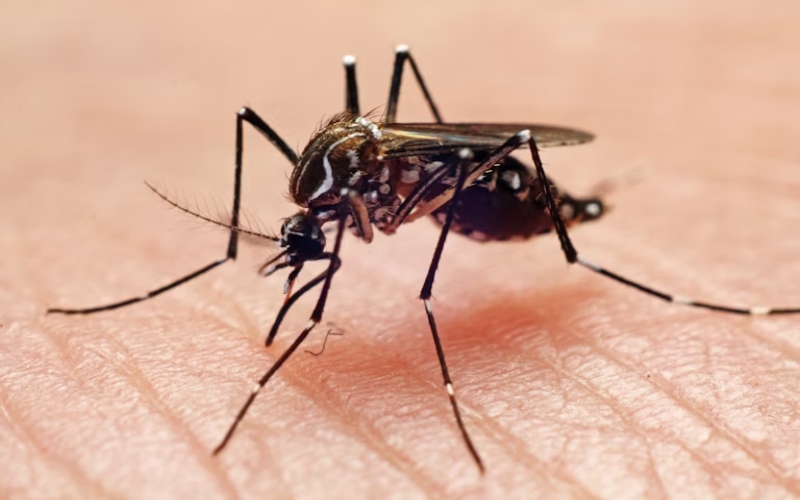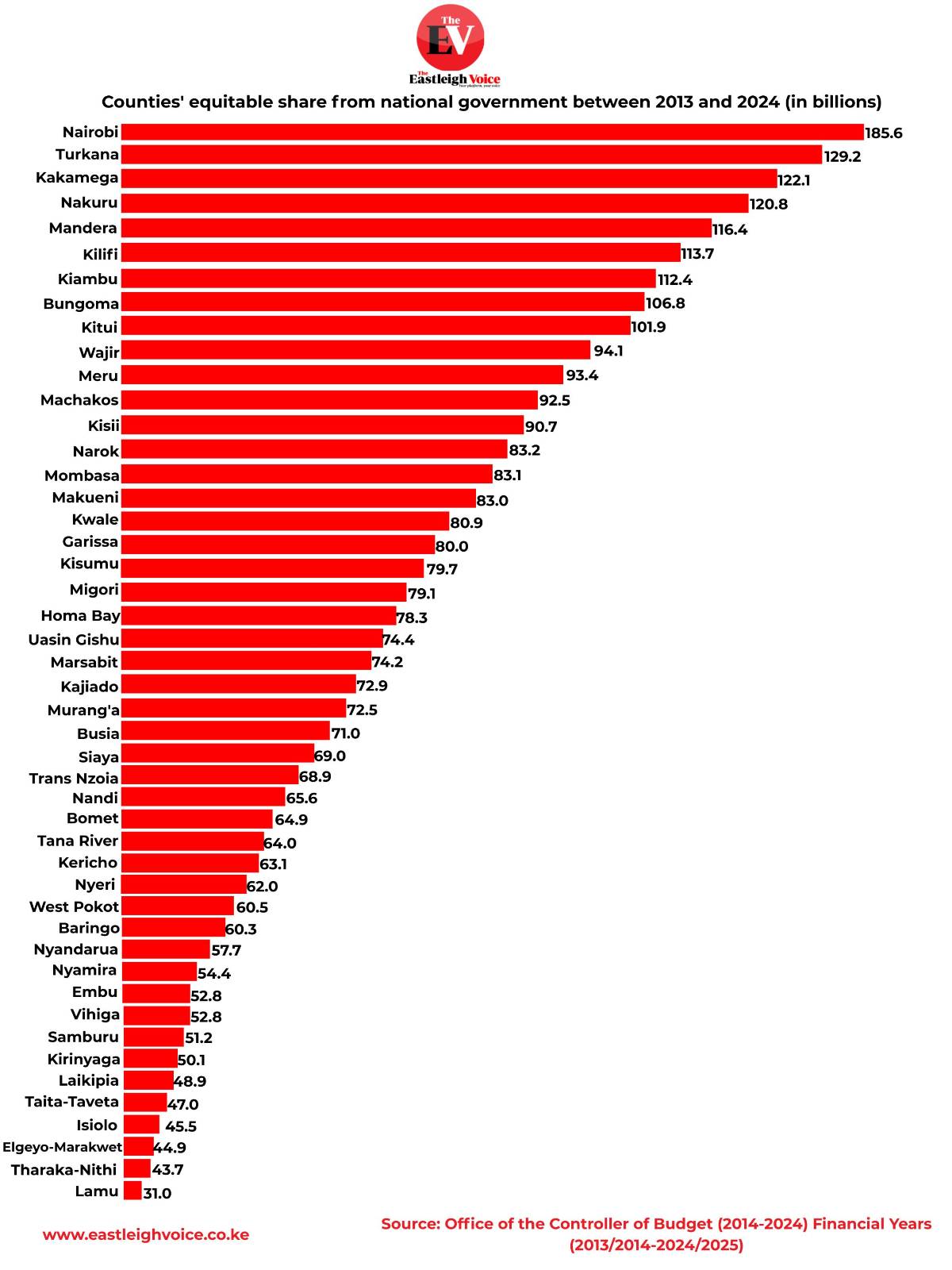How changing weather patterns fuel Rift Valley Fever transmission

Past outbreaks have often been linked to heavy rains and flooding that increase mosquito populations, especially in Rift Valley and northeastern regions, making early detection and prevention critical.
While Kenya has not reported any Rift Valley Fever (RVF) cases, a significant outbreak currently unfolding in Senegal, where over 100 infections and 18 deaths have been confirmed, has raised concerns about the potential re-emergence of the zoonotic disease across East Africa.
Caused by the Rift Valley fever virus, RVF was initially discovered in 1931 during an outbreak among sheep on a farm in Kenya's Rift Valley region. Senegal is currently experiencing one of its worst outbreaks, according to the country’s Ministry of Health. It declared its first major RVF outbreak in years in late 2024, with the northern livestock-producing regions hardest hit.
More To Read
- Nearly four million vaccinated as yellow fever threat looms in Eastern Uganda
- Somalia implements mandatory vaccination for travellers
- Uganda introduces Yellow Fever vaccination card requirement for all travellers
- Uganda extends yellow fever vaccination drive amid growing threat
- Isiolo enhances health measures to curb spread of deadly Rift Valley Fever
- Ethiopia introduces yellow fever vaccine into routine immunization program
According to the World Health Organisation (WHO), the disease primarily affects animals, whether wild or domestic, and can spread to people through direct contact, bites, scratches, consumption of contaminated animal products, or through vectors like mosquitoes or ticks.
The virus is transmitted through contact with infected livestock or through the bites of infected mosquitoes, particularly species belonging to the Aedes and Culex genera.
Aedes mosquitoes are a genus of mosquitoes known for transmitting several important viral diseases, including dengue fever, Zika virus, chikungunya, and Rift Valley Fever. Two of the most well-known species are Aedes aegypti and Aedes albopictus. These mosquitoes typically breed in small, stagnant water collections such as flower pots, discarded tyres, and water storage containers near human dwellings. They are aggressive daytime biters, often feeding indoors and outdoors.
Culex mosquitoes are another genus of mosquitoes that transmit viruses such as West Nile virus, Japanese encephalitis, and Rift Valley Fever. Species like Culex pipiens and Culex quinquefasciatus breed in larger, more stagnant water bodies such as ponds, marshes, and polluted water. They tend to be active during dusk and night.
Both genera are important vectors for the Rift Valley Fever virus, acting as carriers that spread the virus from infected animals to humans through their bites.
In humans, symptoms typically appear 2 to 6 days after infection and can range from mild to severe. Common symptoms include fever, muscle pain, joint pain, headache, and weakness.
In severe cases, RVF can lead to hemorrhagic fever, encephalitis (inflammation of the brain), retinitis (which can cause vision loss), and, in rare cases, death. Most people experience mild symptoms and recover within two weeks.
Risk of infection
Certain factors increase the risk of infection.
People who work closely with animals, such as farmers, veterinarians, slaughterhouse workers, and livestock handlers, are at higher risk due to exposure to the blood, organs, or bodily fluids of infected animals. Individuals living in areas with high mosquito populations, especially where there is flooding or standing water, are also at risk from mosquito bites.
Additionally, consuming raw or undercooked animal products from infected animals can increase the likelihood of infection. Rift Valley Fever mainly occurs in sub-Saharan Africa but has the potential to spread to new regions where suitable mosquito vectors exist.
The virus is transmitted by mosquitoes that become infected when feeding on infected animals. The virus can survive in the eggs of mosquitoes, especially those of the Aedes species, allowing it to persist through dry periods and re-emerge when rains create favourable conditions for mosquito breeding. These mosquitoes then act as vectors, spreading the virus to both animals and humans.
Treatment
Currently, there is no specific antiviral treatment for Rift Valley Fever. Treatment is mainly supportive, focusing on rest, fluid replacement to prevent dehydration, and medications to relieve pain and reduce fever, such as acetaminophen. Severe cases may require hospital care, particularly when complications like hemorrhagic fever or encephalitis occur.
Preventive measures include vaccinating livestock to reduce the spread of the virus, especially in high-risk areas. People at risk should avoid contact with sick animals and use protective clothing, gloves, and insect repellents.
Mosquito control is critical and involves eliminating breeding sites, using insecticide sprays, and sleeping under insecticide-treated nets to reduce mosquito populations and prevent bites. Food safety measures include avoiding raw or unpasteurized milk and undercooked meat from potentially infected animals. Public education is also essential to raise awareness about transmission and preventive behaviours.
Experts link the latest outbreak to climate factors, including alternating heavy rains and dry spells, which create ideal breeding conditions for mosquitoes. The WHO stresses the importance of vaccinating livestock and controlling mosquito populations to limit the spread of the virus.
Climate change
Experts highlight that climate change significantly affects the distribution, abundance, and seasonality of Aedes and Culex mosquitoes, thereby increasing the risk of disease transmission. Rising temperatures accelerate mosquito life cycles, resulting in more generations per season. Additionally, warmer conditions shorten the incubation period of viruses within mosquitoes, allowing them to become infectious more quickly.
Changes in rainfall patterns also play a critical role. Increased rainfall and flooding create more breeding habitats by filling natural and artificial containers with water. Conversely, drought conditions can concentrate breeding in fewer water sources, which may increase contact between mosquitoes and humans.
Higher temperatures and shifting precipitation patterns enable mosquitoes to expand into new areas that were previously unsuitable for their survival, including higher altitudes and latitudes. Warmer climates also lengthen the mosquito activity period, extending the months during which diseases like Rift Valley Fever can be transmitted. Furthermore, extreme weather events such as flooding from storms and heavy rains can create temporary breeding grounds, leading to spikes in mosquito populations and increased outbreaks.
Overall, climate change creates more favourable conditions for both Aedes and Culex mosquitoes, raising the likelihood of disease spread, including Rift Valley Fever, in both endemic and previously unaffected regions. This situation underscores the urgent need for enhanced surveillance, vector control, and public health preparedness to address the evolving challenges posed by a changing climate.
Oubreak in Kenya
Kenya's history with RVF includes several devastating outbreaks in 1997, 2006, and most recently in 2018, which caused significant illness and loss of life in both humans and animals. The 2006 outbreak, for example, resulted in over 300 confirmed human cases and more than 100 deaths, alongside widespread livestock losses that impacted rural livelihoods.
Despite the absence of recent confirmed cases, Kenya remains highly vulnerable. Current climatic conditions, including above-average rainfall in many regions, are favourable for mosquito breeding. Additionally, livestock movements, trade, and limited access to vaccines in some pastoralist communities contribute to ongoing risk factors.
The risk is compounded by challenges in surveillance and rapid response capacity in some remote areas. Past outbreaks have often been linked to heavy rains and flooding that increase mosquito populations, especially in the Rift Valley and northeastern regions, making early detection and prevention critical.
The WHO recommends a multi-pronged approach to RVF prevention that includes:
(1) Vaccination of livestock, especially in high-risk areas, to reduce the virus's spread.
(2) Mosquito control efforts, such as insecticide spraying and habitat management to reduce breeding sites.
(3) Community education to limit risky human behaviours, such as handling sick animals without protection.
(4) Strengthening surveillance systems to detect outbreaks early and coordinate rapid response.
Top Stories Today
Reader Comments
Trending











































